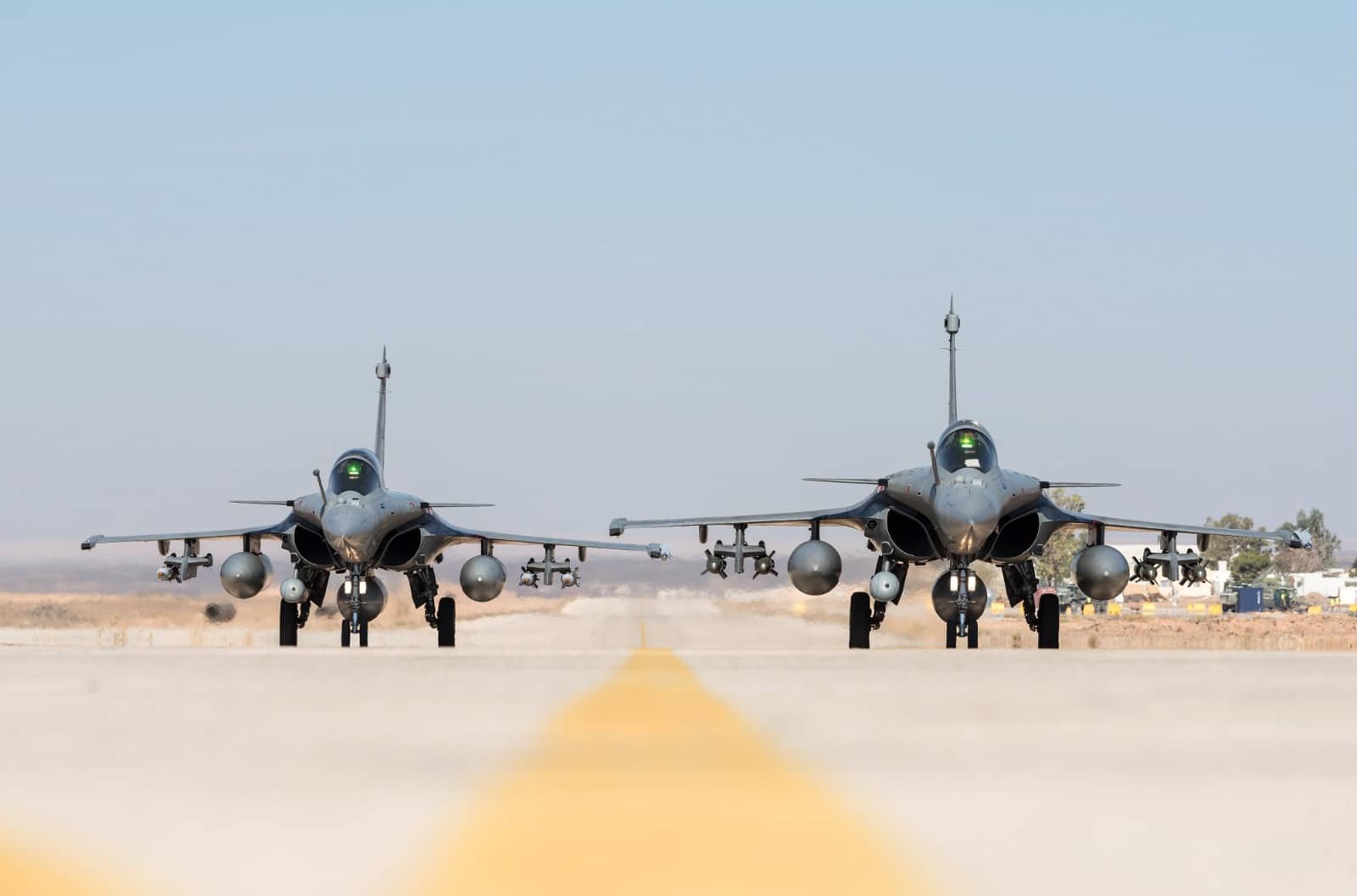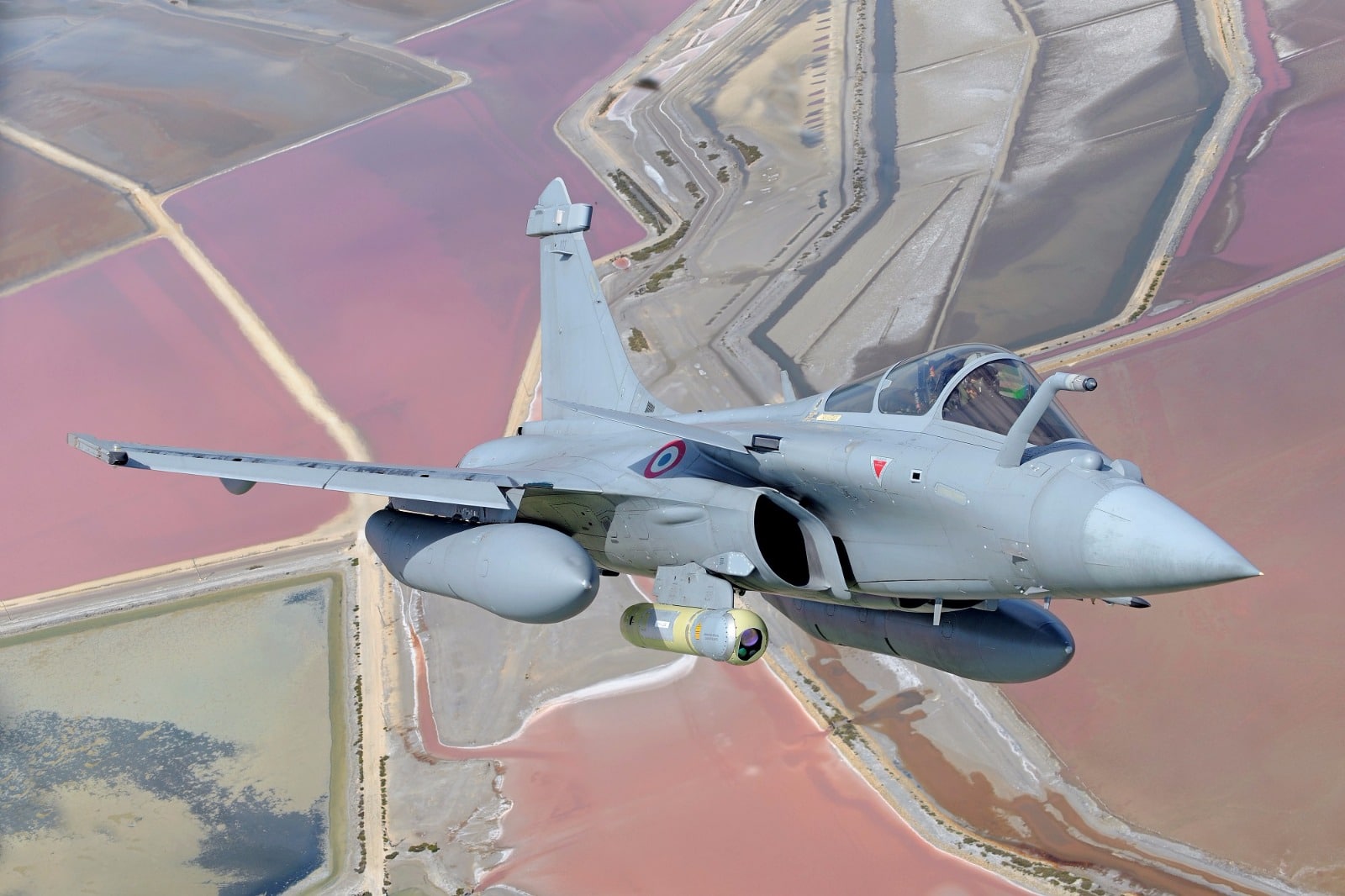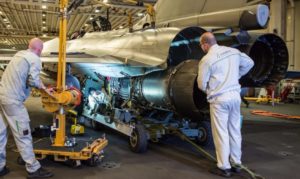
Image Courtesy: Dassault Aviation
Rafale: The Deal and the Din: A way forward
Editor’s Note
The Rafale deal has been dragged to the streets. It’s not the first time that a defence deal has been questioned so volubly by our political parties, however, the facts and barbs being directed at the deal need to be viewed on their merits rather than their value in terms of gathering headline space. The author uses his long experience in acquisition of equipment to go into the details. Hopefully, the truth will drown the din and the IAF will get its much-needed fleet of Rafales.
Rafale: The Deal and the Din: A way forward
India Todays article “The Rafale Dog Fight” personifies our political class. The Rafale is the bone? One says that everything is wrong. The other says everything is perfect. A battle of perception is being played out. I have no problems with political parties and their associated loose cannons going hammer and tongs at each other till their kingdoms come. That is democracy. Parties win or lose. Governments come and go. However, India will remain, and its interests are permanent and supreme. I feel that the centrality of India’s national interests in an unstable geopolitical neighbourhood is being lost sight of. If things drift in this obscurantist way there is a chance that the Rafale deal will sour. If that happens it will be a pyrrhic political victory at India’s cost. I don’t think Indians will ever forgive the warring parties. Indians buried the Bofors ghost when Pakistanis were hammered during Kargil ops. It is time for our political class, pseudo intellectuals and our manic media to move on. When there is nothing else – “Bofors Khand to the fore. Tally ho!” Cut out that mentality.
The Rafale deal is not yet clean or dirty. It could go either way depending on how it is handled hereafter. This is an opportunity for all concerned to keep national interests in mind, exhibit maturity, cement the cracks and see that the deal goes through well. For that to happen the issues involved need identification, understanding and resolution. As per my analysis based on what has appeared in public domain there are four parts to this story which need understanding. These are – the rationale of Rafale aircraft acquisition, the cost of acquisition, the offset contracts and the maintenance contract.
The Rationale
It is beyond doubt, even for imbeciles, that the Rafale is a dire necessity for India. Selection of this aircraft has been through a transparent competitive route spanning a decade or more. At this juncture of dwindling numbers of fighters and increasingly tough geopolitical environment, the cost of not clinching the deal is unacceptable. Firstly, we will not have a modern force multiplier aircraft which will give the IAF an edge in any conflict. Secondly, the strength of IAF will go down below acceptable levels for effective defence of the nation. Thirdly and very importantly, the procurement process will go back by at least a decade. That will be a period of extreme vulnerability to India. Fourthly, the futuristic cost of the replacement aircraft will multiply. Fifthly it provides a base for further acquisition on ‘Repeat’ basis. Lastly, the goalposts can change. The opportunity loss incurred by the nation will be humongous. Hence every party must put national interests above political interests, if India means anything to them, and ensure that the Rafale lands in India on time.

Image Courtesy: Dassault Aviation
Acquisition Cost
There has been a high-pitched hue and cry that the cost of acquisition is higher than what was negotiated earlier. I do not think so. A Cost Negotiation Committee (CNC) would have been formed, composing of the Acquisition Manager (a Joint Secretary), the Technical Manager (an Air Vice Marshal) and Financial Manager (IFA) of Air Systems, Advisor Costs and User reps (IAF) and some others. This is an apolitical heterogenous governmental body which will not / cannot kowtow to individual, party or vested interests. The Rafale was negotiated by a CNC since 2012 under the MMRCA deal. That was set aside because a price agreement could not be reached. It was common knowledge in South Block that the deal was going down the drain. We, then, entered into an Inter-Government Agreement with France for the current deal of 36 aircraft out of sheer operational necessity. However, the base price for the current negotiated cost would have to been drawn mandatorily by the CNC from the previous costs as per procedure. Certain changes would have been made in our requirements based on our previous experience. Accommodation would have been made on both sides to reach a middle ground cost. Hence in such an environment, one can’t pass judgement that the cost was more. Moreover, all negotiations were between cost negotiators/ CNCs of respective governments and firms. It was not between private individuals or political parties. The provisions of the DPP, composition of the CNC and the stakes involved in this deal were far too high to fiddle around with prices perfunctorily. These costs would have been ratified by the DAC, Finance Ministry and CCS. In any case all examination and iterations would be far too clearly recorded and can be checked/audited at will.
Offset Issues
The deal has 50% offsets. Broadly it means that Dassault must purchase items from India or invest in India or provide Services or transfer technology which is costed or whatever else as permitted by current offset regulations. All these must total 50% costs. Dassault is free to choose its offset partners, but within limits. Dassault itself must go through a proper process to select offset partners. Offsets get executed over a six to ten-year period and normally commence after a couple of years. The offset contract is critical to the deal over the long term. What if the offset contracts fail? Won’t it affect the main deal? It will. In any case, the offset plan of Dassault must be accepted and approved by the Government including Indian Offset Partners. Thereafter, as much as it is the obligation of the contractor to execute offsets it is the duty of the Government to approve an executable plan and guide the contractor in its correct execution. Hence to say that the main contractor is free to choose whom he wants as the offset partner is not correct. In this case it seems that Dassault has zeroed on to about 72 firms/entities as partners to discharge its offset obligation. That’s fine so far. The issue which has come into focus is the much-publicized business arrangement between Dassault and Reliance ADAG. The firm has virtually staked claim as a major defence player and the major executor of offset obligations of Dassault through a letter which appeared in leading newspapers.
The focus is for three reasons. Firstly, there is a widespread perception that the Group is close to people in power. Secondly, the Group is in trouble. Reliance Naval is in the stressed assets list of RBI. A news report mentioned that “Net worth of two of group firms including Reliance Naval & Engineering Ltd (RNEL) — has been “substantially eroded” and its current liabilities have exceeded its current assets”. SBI has approached DOT not to cancel spectrum allocations to the Group flagship firm R Com so that the proposed sale of the spectrum and other assets provide a viable chance of debt resolution for lenders including many public-sector banks. There is a huge legal settlement dispute with Ericsson. Thirdly the firm has no track record of being in Defense Industry till it parachuted in very recently. There is reason to pause and examine offsets in detail.

Upcoming Dassault Reliance Aerospace Limited manufacturing facility in Mihan, Nagpur, Maharashtra.
That aside, if the offsets are to be executed through a bouquet of 72 partners including RelianceADAG, there is largely no issue. Unless of course Reliance ADAG has a major share. Then it must be examined as to what does Reliance Naval/ Defence (a stressed asset firm) produce which has such value to Dassault? What is the assessed future of its aerospace JV with Dassault? It has also to be ensured that Reliance ADAG or its new JV with Dassault is not the sole intermediary which handles the balance 72 odd offset partners. In such a case Reliance/ JV assumes role of a middleman. Middleman? Siphoning? Sinful Swiss Chocolates and Banks? All come into play. Needs deeper and serious examination. Technically Dassault can invest capital into the JV and claim offset credits for it. However, Dassault cannot claim offset credit for any purchase from a JV /entity which it owns in part in India. It was not allowed for BAE in the M777 case due to possibility of unfair offset manipulation.
The offset contracts are as important as the main contract. There is already a case playing out with Lockheed Martin. Luckily it is an FMS case. The basic deal is an inter-governmental agreement with the USA. The Sovereign Guarantee of the USA should take us through even though there is likelihood of arbitration. Our operational efficacy is not likely to suffer. Does the IGA with France have such sovereign governmental guarantee? Or has the French government been a mediator only? Needs clarification. Historically France has always had a policy which suits itself alone. Remember it is not part of NATO. It has it own standards. Is the performance guarantee amount appropriately bonded? Adequate safe guards must be built. There is a case pertaining to Textron wherein the performance guarantees have been cashed due to inability to execute offsets. Offsets of such huge magnitude have default risks. Better anticipate and tackle them rather than brushing them under a carpet.
Maintenance Contract

The Rafale will be in Service for the next 20 odd years. Hence the maintenance contract is important operationally. Agreed there is a requirement to privatize and encourage defense industry in India and we must move beyond HAL. It is not ordained that HAL gets all contracts specially since it leads to monopoly and underperformance. However, if I were any one in the IAF, I would look carefully into the maintenance issues and who will execute it day in and day out for three decades.
Way Forward
If IAF wants a good deal in the long term it can insist on proper offset and maintenance contracts. From personal experience the Government of India has the bandwidth to accept a nudge and will welcome it from the user. As for the government- it has an onerous responsibility well into the future. Remember, the Bofors still remains the mainstay of our Artillery three decades later due to the strong maintenance and operational fundamentals despite a flawed acquisition. There will be unforgiving hell to pay if the Rafale does not perform well operationally due to a flawed offset or maintenance issues. The way forward is clear. The rationale and price issues are on stable ground. Do not focus on that. We need to concentrate on offset and maintenance issues and sanitize them. The deal is not yet dirty and there is adequate scope to straighten things out. However, if ignored or left unattended, problems will surface. It did so in Augusta Westland. That was a VIP helicopter only. This is a fighter jet deal with huge national security ramifications.
Emotions aside what is the practical way ahead? It revolves around some mechanisms to be put in place or old ones strengthened. Firstly, the parliamentary committee on defense or a specially constituted committee can look at the deal holistically and table it in the parliament. Secondly, the offset issues must be put through a lens and the DOMW must be strengthened by an expert committee to oversee execution of various aspects of the offset and maintenance contracts. Thirdly, political maturity and flexibility must come in. The deal cannot be about each political party claiming what is wrong. The deal must end with each political party claiming as to how it contributed to ensure that the Rafale is a success. The deal will only be a success if we are able to go in for a Repeat order and more Rafale’s boost our strength numerically also. Utopian? Maybe. Hope abounds. As a concerned Indian, I want a stronger IAF at the earliest.

Comments
Post a Comment